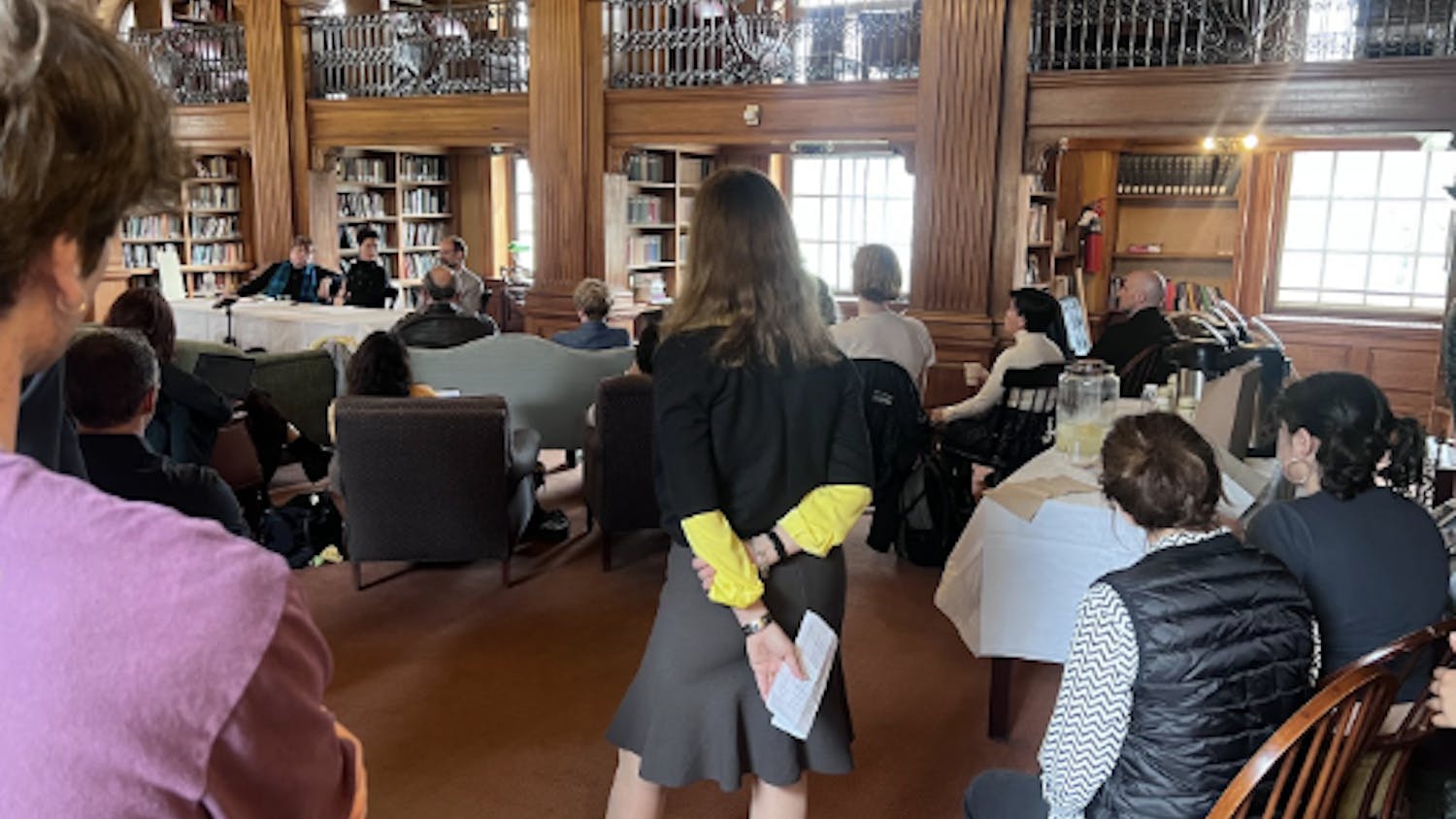This is the first in a series of four behind-the-scenes articles looking at the creative theatrical process by chronicling the theater department's mainstage production of Arthur Miller's play "A View from the Bridge."
Four hours a night, six days a week, self-destruction and incestuous jealousy unravel over and over at the Moore Theater. Again and again, these scenes of raw humanity spill across the stage as the theater department gears up for its production of Arthur Miller's controversial "A View From the Bridge."
The play revolves around Eddie Carbone, a Brooklyn longshoreman who is subconsciously infatuated with his young niece Catherine in spite of the fact that he is already married.
The cast boasts a relatively large size of 22, eight of whom are freshmen.
Eddie is played by Jonathan Smolian '04. The play also stars Nicola Korzenko '07 as Catherine, Andrew Dahl '05 as Catherine's love interest Rodolfo and Katia Asche '04 as Eddie's wife Beatrice.
Visiting director Jackson Gay recently graduated from the Yale School of Drama, and hails from New York City where she is currently based.
"A View from the Bridge" is the first production she is professionally directing since graduating from Yale Drama.
Friday, October 31
Moore Theater, 7 p.m.
Rehearsal kicked off with group stretching led by guest fight director Charles Conwell. Conwell is based at the Philadelphia University of the Arts, and flew to Hanover for the weekend to choreograph the "violent" scenes.
Choreographing a slap was first on the agenda; a loud, sharp whack and an accompanying cry of pain reverberated like thunder throughout the theater.
Of equal volume was Conwell's response to what he saw.
"Separate the pain from the cry!" roared Conwell. "In order for the audience to know your pain they need to hear your cry distinct from the slap. Unrealistic but effective." Then another slap -- this time with a pregnant pause between the slap and the pained gasp.
"Better," dismissed Conwell.
Next was a scene in which Eddie turns kissing into an act of brutality. The scene's tension was palpable. Immediately after Smolian's brutal kiss, his fellow actor spat.
This elicited great approval from both Gay and Conwell. "I really like that," called out Gay. "The violence looks fine," added Conwell.
In between scenes, Gay addressed the actors about something that had been bothering her.
"I want you guys to deal with what's there on stage," Gay told the cast, "When that chair was turned over, you guys awkwardly stepped around it the whole scene. Next time, just remove it and continue the scene."
"Improvise," agreed Smolian.
Following the pep talk, it was time to work on yet another meticulously crafted outburst. Eddie, under the pretext of teaching Rodolfo how to box, begins showing off in front of Catherine, and soon things grow out of control.
Conwell coached Smolian and Dahl about the precision of the punches. "The last one has to be very straight," he cautioned while showing the actors which parts of the arms they were to hit in order to avoid being hurt. "You should be aiming for the fleshy part, not the bone," he said.
Justin Zalkin '07, assistant fight director, also had a few pointers for the scene involving location and distance between the actors. The actors' placements were debated and changed to test out how well the new locations would work.
Summing up the scene, Conwell told Dahl, "when Eddie hits you it really hurts, but you pretend it doesn't hurt because your girl is watching. This whole scene exists to hurt you, so be aware of that."
Dahl appeared to take this advice to heart as he "took" yet another punch from Smolian.
Saturday, November 1
Moore Theater, 7:30 p.m.
The climactic crate-hook fight scene commenced.
Crate hooks, for the benefit of those unfamiliar with the term, are large and menacing metal hooks employed by longshoremen to haul cargo from incoming boats.
Marco, Rodolfo's brother, is enraged at Eddie and confronts him demanding for an apology. A tense fight with crate hooks results from their exchange.
The actors walked through the scene in slow motion as there were many complicated moves, rolls and ducks. "It will invariably speed up, but it's important to learn it and practice it slowly in the beginning," said Conwell.
Realistic sound effects and the dramatic motions kept all eyes eagerly focused on every move. The crate hooks invariably called forth Captain Hook imagery, as the two figures warily circled and rushed at each other with outstretched hooks.
Conwell explained that he was an expert on crate hook fighting, and had seen the rare filmed version of the play where the crate hooks had been incorporated into the story for the first time. "I want a moment of psychic electricity when it becomes a two-hook fight," he impressed upon the actors.
"The three components of stage combat are safety, credibility and style," said Conwell, when asked about his instruction, "I create the style."



